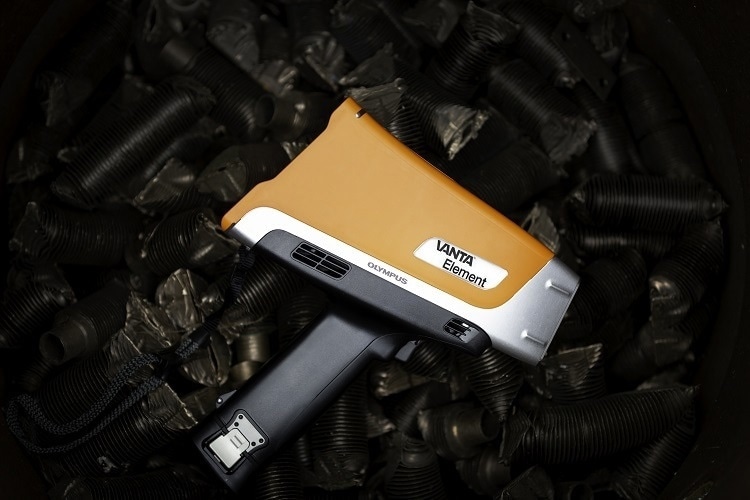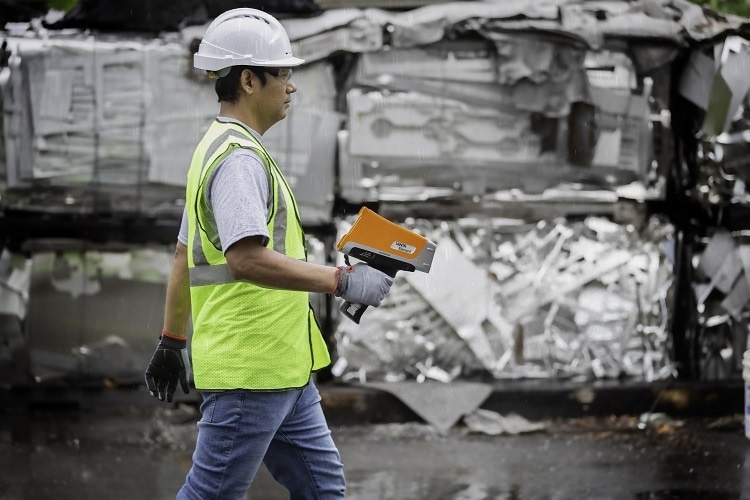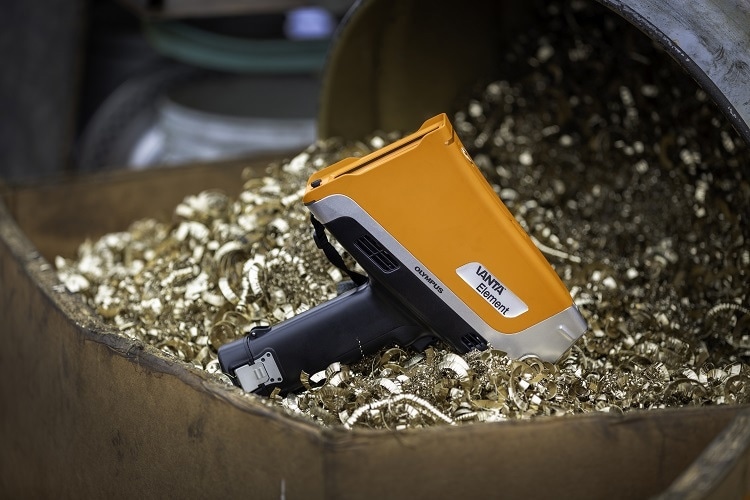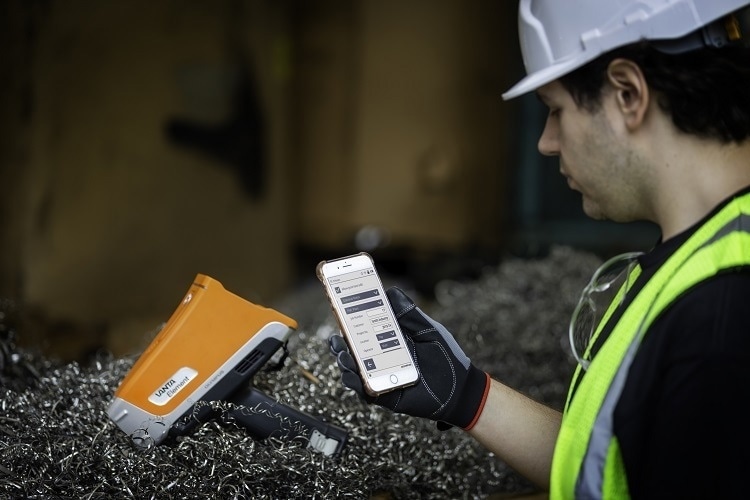Olympus’ Ted Shields talks to AZoM about the new Vanta™ Element handheld XRF analyzer. In this interview, Ted discusses the speed, connectivity, and other features that make the Vanta Element an essential tool for on-site elemental analysis.
How does the Vanta Element handheld XRF analyzer identify alloy grades in seconds?
All X-ray fluorescence instruments work through a few steps: emitting X-rays that create fluorescent X-rays in the sample, then counting the fluoresced X-rays and applying a calibration. Our XRF technology has progressed so that even an entry-level instrument, such as the Vanta Element analyzer, can identify basic grades in one or two seconds.

What sets the Vanta Element XRF analyzer apart from other models on the market?
The Vanta Element analyzer brings modern features to an entry-level XRF instrument. Affordability is combined with conveniences such as connectivity, direct export to a USB drive, and PDF report creation right from the analyzer. This is done without compromising the Vanta series’ reputation for ruggedness, accuracy, precision, and ease of use.

Can you describe the advanced features of the XRF analyzer?
Like the entire Vanta family, the Vanta Element analyzer features optional wireless connectivity. You can connect to the Olympus Scientific Cloud™ for seamless data sharing and fleet management tools, the mobile Vanta app, or a shared network drive.
We are actively developing the Olympus Scientific Cloud to provide even more advanced connection features. If you don’t need these features today, you may need them during the life of the analyzer as the workplace evolves and becomes increasingly connected.
For instance, our fleet management tools enable you to standardize workflows by making updates across all your Vanta devices. Admins can set permissions, create default settings, and customize displays for any user or application, then deploy those changes to all Vanta analyzers.

How does the Vanta Element help to streamline scrap metal recycling and improve quality control?
In addition to modern data handling, the Vanta software offers an on-screen color graphic grade display, so you can instantly see if a grade is in specification. And if not, the display suggests the reason why. These clear results on a smartphone-like display make the instrument easier to use compared to analyzers with older user interfaces and smaller screens.
What impact will the Vanta Element analyzer have on demanding applications and environments?
User expectations for their XRF analyzer are like the expectation for the rest of their tools. It should just work. We designed the Vanta Element instrument for tough environments, so it works wherever you go.
In fact, the Vanta Element analyzer is IP54 rated for resistance to dust and moisture and passes the 4-foot (1.2 m) drop test (MIL-STD 810G), so an accidental drop or jostle shouldn’t shut you down. Every Vanta Element analyzer is also tested in the factory to work continuously at temperatures up to 45 °C or 113 °F. With these rugged features, you can feel confident using the instrument in demanding environments.

Where can our readers learn more?
To learn more about the Vanta Element, visit Olympus-IMS.com/XRF/Vanta-Element/ or contact your Olympus sales representative. I also recommend you check out our popular blog post, 5 Features Your Cost-Effective XRF Analyzer Should Have, to discover essential features to look for in cost-effective handheld XRF.
About the Ted Shields
 Ted Shields has been an Olympus employee for 12 years and a Product Manager for over 10 years. As Senior Product Manager, he has brought the revolutionary Vanta line of handheld XRF analyzers to market starting in 2016. Ted holds a master’s degree in Applied Physics.
Ted Shields has been an Olympus employee for 12 years and a Product Manager for over 10 years. As Senior Product Manager, he has brought the revolutionary Vanta line of handheld XRF analyzers to market starting in 2016. Ted holds a master’s degree in Applied Physics.
Disclaimer: The views expressed here are those of the interviewee and do not necessarily represent the views of AZoM.com Limited (T/A) AZoNetwork, the owner and operator of this website. This disclaimer forms part of the Terms and Conditions of use of this website.